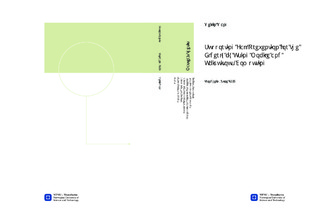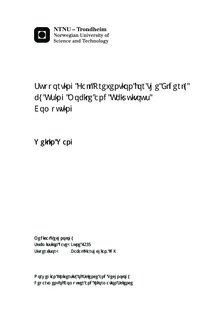| dc.description.abstract | Approximately one third of the elderly (over age 65) fall each year. Falls are the one of the main reasons of injury-related cases and the leading cause of accidental deaths among the elderly. The overwhelming majority of studies about falls using ICT are related to fall detection, which copes with the fall accidents and injuries that have occurred. The fall prevention aims to avoid falls before falls occurred. Only few studies have investigated fall prevention by using ICT. Currently, there are no relevant studies to fall prevention by ubiquitous computing.Objectives of this thesis are to investigate what are effective measures of fall prevention and how mobile and ubiquitous computing can support these measures for the elderly. This thesis project mainly applies several methods: Precaution Adoption Process Model to design the prototype applications, the iterative process, user participation in the whole process, and several other core design principles.The outcome of this thesis project includes a use case, usage scenarios, a high-level and interactive prototype, a system overall architecture, implementation of two prototype applications (open source), and evaluations for a high-level prototype and two prototype applications using a modified heuristic evaluation method. The evaluation for high-level prototype was performed by using the semi-structured interview with 4 participants. The evaluation for prototype applications was conducted by using a street survey (9 participants) and semi-structured interviews (3 participants). The findings from evaluations reveal that the prototype applications using mobile and ubiquitous computing could support the fall prevention well in usefulness, ease of use, intention of use (on tablets).The prototype applications works in two modes: interactive mode (fall risk assessments, fall prevention information, and social interactions), ambient display mode (smart photo frame: in the living room or the bedroom, and without requiring users? any direct interactions). The prototype applications aim to demonstrate the mobile and ubiquitous technologies could support the elderly in fall prevention. This thesis also demonstrates: 1. The prototype applications are possible to meet the challenge of personal relevance by enabling the elderly to perform fall risk assessments. 2. They enable the elderly to acquire knowledge about fall prevention. 3. They are possible to support the fall prevention program on a large population with low costs and without requiring amounts of health professionals to participate in, unlike traditional prevention programs. 4. They are possible to increase the acceptability for fall prevention among the elderly and enable the elderly to have behavioral changes about lowering the chances of falling, in a non-obtrusive and unconscious manner (users casually glance while passing by the prototype system). | nb_NO |

